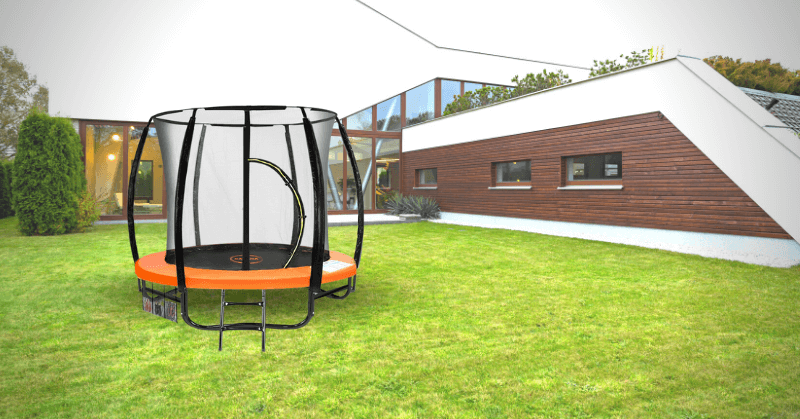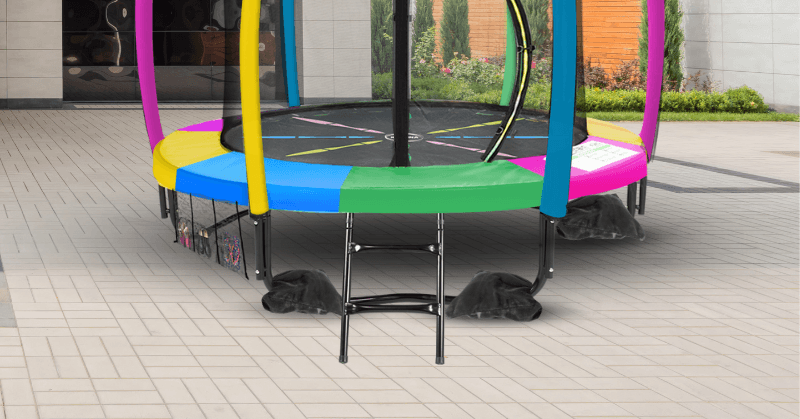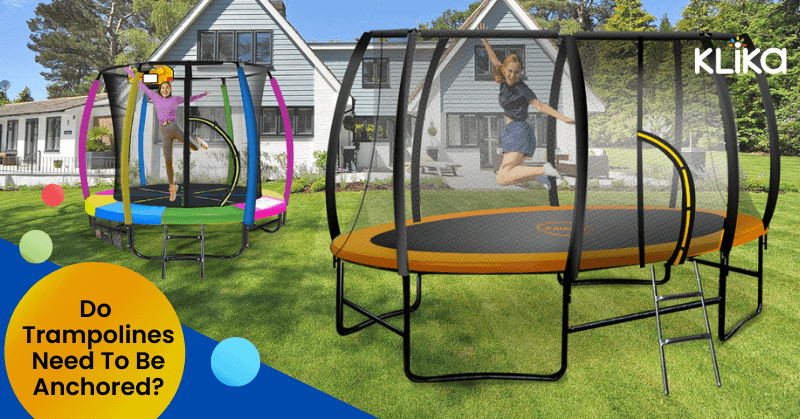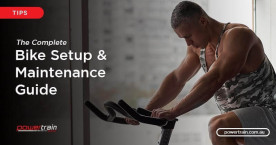Bouncing on trampolines is a popular backyard activity for children and adults alike. It’s a great way to stay active, have fun and blow off some steam. But for many parents, safety is a major concern when it comes to trampolines. One of the most important safety measures to consider is whether or not your trampoline needs to be anchored. In this blog, we will discuss the importance of anchoring trampolines, and the various methods you can use to anchor your trampoline down.
How do you keep a trampoline from blowing away?

When you think of trampolines, you probably think of a fun activity that can be enjoyed by kids and adults alike. Unfortunately, trampolines can also be dangerous if they are not used properly. One of the biggest concerns with trampolines is that they can be blown away if they are not secured properly.
Fortunately, there are several ways to keep your trampoline from blowing away. We’ll cover a few of the most important ways to ensure that your trampoline stays in place and is safe to use.
1. Anchor your trampoline
The first step to keeping your trampoline from blowing away is to make sure that it is secured properly. This means that the trampoline should be anchored properly to the ground. Most trampolines come with an anchoring kit that includes stakes to secure the trampoline to the ground.
It is important to note that trampolines should only be secured to a flat, level surface. If the surface is uneven, the trampoline could become unbalanced and potentially be thrown off by the wind. If the trampoline is not secured properly to the ground, it could also be moved by wind gusts and cause serious injury.
2. Secure your trampoline to a heavy object
Another way to keep your trampoline from blowing away is to tie a rope or cable to the trampoline and secure it to a heavy object, such as a tree or a fence post. This will help keep the trampoline in place and make it more difficult for the wind to move it. When securing your trampoline to a tree or fence, keep in mind that you still need a minimum clearance of around 3 metres around the entire trampoline.
3. Inspect your trampoline on a regular basis
Finally, make sure to inspect the trampoline on a regular basis to ensure that it is still secure. If you notice any damage or loosening of the stakes, it is important to fix the problem immediately to ensure that the trampoline remains secure.
How do trampoline anchors work?
Trampoline anchors are an essential piece of kit for trampoline owners, providing a secure connection between the trampoline and the ground. But how exactly do they work?
Anchors are designed to keep the trampoline firmly in place, even in strong winds or when your kids are bouncing around. As such, they must be strong and secure, with the ability to hold the weight of the trampoline and its occupants.
Trampoline anchors are typically made from metal and are attached to the trampoline frame. They need to be long enough to ensure they can firmly secure the trampoline. Once attached, the anchors must be inserted into the ground with a hammer or drill. This will ensure they are firmly fixed in the ground and can hold the trampoline in place.
4 different ways to anchor your trampoline
When selecting a trampoline anchor kit, it's important to consider the size and weight of your trampoline. You'll need to make sure that the anchor kit is designed to hold the weight and size of your trampoline. You should also consider the type of ground on which you'll be anchoring your trampoline. Some anchor kits are designed to work with grass, while others are better suited for concrete or asphalt.
Anchoring with stakes
One of the most common ways to secure a trampoline is by staking it into the ground. This requires driving metal stakes into the ground around the perimeter of the trampoline and using heavy-duty straps to tie the trampoline to the stakes. For added security, you can also use sandbags around the perimeter of the trampoline.
Anchoring with sandbags
Another option is to use sandbags to secure your trampoline instead of stakes. To do this, you’ll just need to fill several sandbags and place them around the perimeter of the trampoline. You can then tie the trampoline to the sandbags using heavy-duty straps.
Anchoring with concrete
If you’re looking for the most secure way to anchor your trampoline, then you can use concrete. This requires you to pour concrete around the perimeter of the trampoline and then use metal rods to tie the trampoline to the concrete.
Anchoring with wind stakes
Wind stakes are specially designed to hold down trampolines and keep them in place in the face of strong winds. They are usually made of a heavy-duty metal material, such as steel or aluminium, and are designed to be easily installed into the ground. The stakes typically come in sets of four or eight and should be placed around the perimeter of the trampoline, evenly spaced out around the trampoline. This helps to ensure that the trampoline is securely held in place, regardless of the wind speed.
Measurements
Before purchasing wind stakes, it is important to measure the trampoline and make sure that the stakes will fit. The stakes should be close to the same length as the trampoline’s frame, and the width should be slightly wider than the trampoline’s frame. Additionally, be sure to purchase stakes that are made of durable material and won’t corrode over time.
Installation
When it comes to installation, the stakes should be driven into the ground at an angle. This will help to ensure that the stakes are firmly held in place and won’t be easily pulled out by the wind. Additionally, it is important to make sure that the stakes are far enough away from the trampoline so that they do not damage the frame.
Once the stakes are in place, it is important to check them regularly to make sure that they are still securely holding the trampoline in place. If the stakes become loose or the trampoline begins to move, it may be necessary to replace the stakes or add additional stakes to further secure the trampoline.
Concrete surfaces are not ideal for trampolines. Sure, it’s a lot more stable than placing it on grass, but the force of bouncing into a rough, hard surface can be damaging to your trampoline's frame and legs. It’s highly recommended that you install your trampoline on soft ground to absorb the impact from bouncing. However, we understand that not everyone has grass in their backyard so it’s very important to set up your trampoline properly if placing it on concrete is the only choice you have.
Aside from using screw-in anchors, the sandbag method is by far the best and easiest option you have.
How do you secure a trampoline in concrete?
Sandbag method

This method is becoming increasingly popular for those looking for a reliable way to keep their trampoline secure in the wind and other outdoor elements. All you have to do is place sandbags around the base of your trampoline to keep it from moving around.
What size sandbags do I need?
When using the sandbag method for securing your trampoline, it’s important to make sure that you have the right size and weight of sandbags. The standard size of a sandbag is typically around 18”x30”, but the weight and size of the sandbag will depend on the size and weight of your trampoline.
Where should I place the sandbags?
Once you have the right size and weight of sandbags, the next step is to place them around the base of the trampoline. You want to make sure that you’re distributing the weight evenly so that the sandbags don’t put too much strain on any one part of the trampoline.
Once the sandbags are in place, you will want to anchor them down in some form or another. You can do this with stakes, ropes, or bungees, but make sure to use something that won’t move around in the wind. This is especially important in areas that experience strong winds.
In conclusion, trampolines should be anchored down for additional security, especially if you live in a windy area. Anchoring the trampoline will help to ensure that the trampoline does not move or tip over during use, which could lead to serious injuries. Plus, anchoring the trampoline will help to keep it secure during inclement weather. Whether you use an anchor kit, sandbags or a set of wind stakes, taking the time to secure your trampoline today will ensure your peace of mind in the future.










